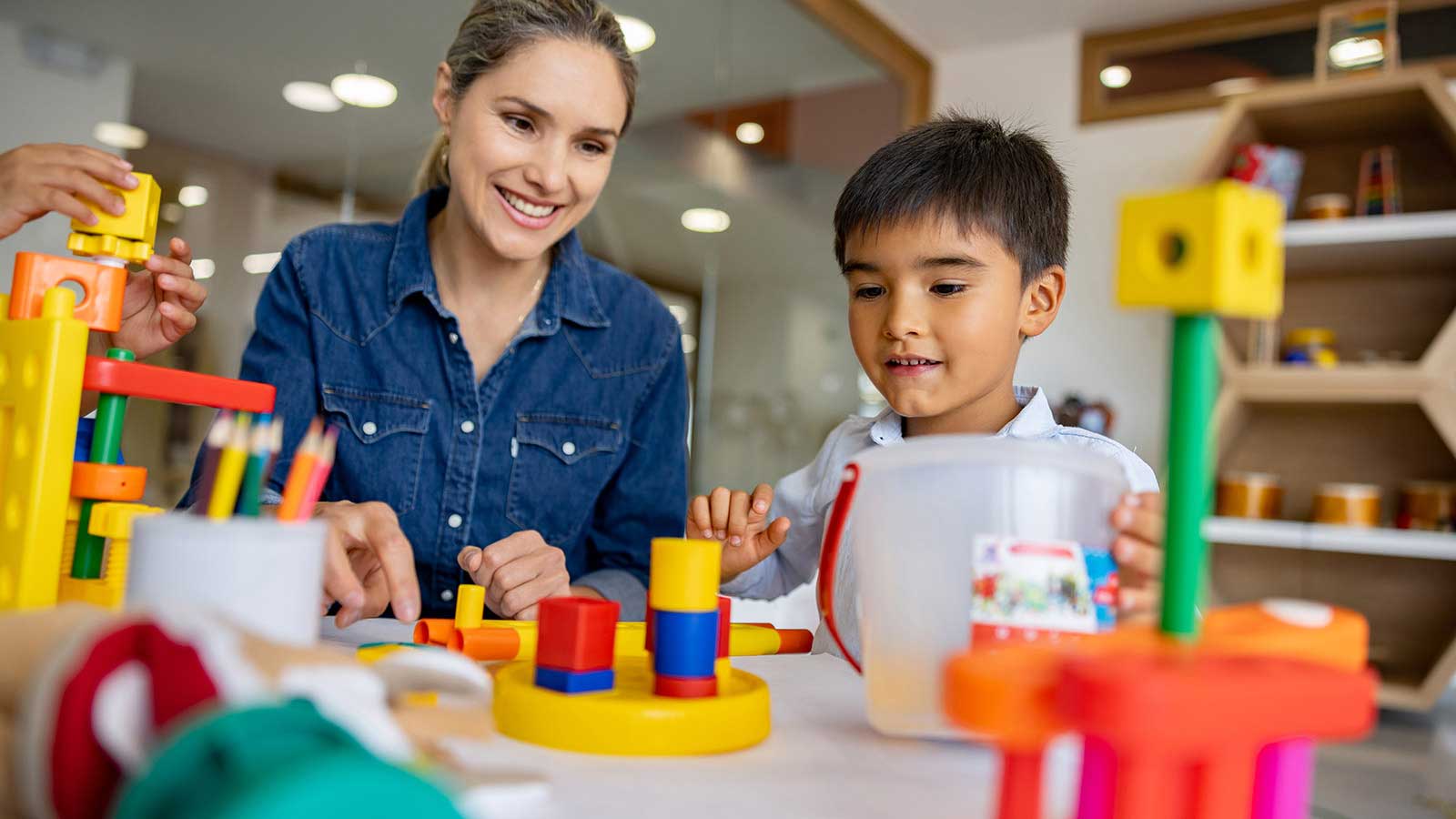You might have heard of occupational therapy as a great treatment option for adults dealing with injuries or illnesses, but did you know it’s also a great option for children? Occupational therapy, also known as OT, can be a game-changer for children facing developmental, sensory, or physical challenges.
By focusing on therapeutic activities, OT helps build skills, boost confidence, and develop the ability to thrive in school and beyond. Keep reading to learn more about how occupational therapy for kids can make a difference in children’s development!
What Is Pediatric Occupational Therapy?
Occupational therapy for kids — often referred to as pediatric occupational therapy — is a kind of therapy that helps children develop the skills they need for daily living and independence. It often focuses on improving fine motor skills, gross motor skills, and sensory processing abilities. The goal is to meet children where they are and help them achieve their full potential. This means helping them engage in school and participate in the activities they enjoy, whether this is sports, arts and crafts, or socializing.
Many children can benefit from OT, including kids with:
- Autism spectrum disorder
- Sensory processing disorders
- Developmental delays or learning disabilities
- Difficulty with fine motor skills or gross motor skills
- Injuries that might affect motor skills
- Trauma or anxiety
Occupational therapy can greatly help children who are struggling in school or having trouble with social skills, as it focuses on giving them the functional strategies they need to overcome obstacles and gain independence. This can in turn help them flourish as they develop confidence over time.
Signs Your Child Might Benefit From OT
Your child’s pediatrician or healthcare provider can help you determine if occupational therapy is the right choice. In general, occupational therapy for kids can help in cases where a child exhibits:
- Difficulty with fine motor skills (such as using scissors or holding a pencil)
- Trouble with gross motor skills (such as difficulty running or jumping)
- Over- or under-sensitivity to certain textures or sounds
- Difficulty with self-care skills
- Trouble with social skills
While these are just general guidelines, OT can often help kids in all of these areas, giving them the tools to overcome struggles.
Occupational Therapy and Autism
Occupational therapy can be a key tool in helping children on the autism spectrum meet milestones and reach their full potential. OT does this by aiding them in different areas where they might struggle, including:
- Sensory processing: Through a variety of activities, occupational therapists can develop custom plans to address sensory processing difficulties common in autism, helping kids navigate their environment and reduce sensory overload.
- Daily living Skills: OT can address skills needed for independent daily living, such as dressing, eating, or personal hygiene.
- Motor skills: OT exercises can provide focused support to help children improve coordination, balance, tool use, and motor planning. This can help with a wide variety of activities, including writing and using utensils.
- Social skills: OT can help develop non-verbal communication skills through structured activities and play. It can help teach children how to take turns, understand emotions, engage in play, and more skills they will need in order to interact with peers.
- Behavioral regulation: Occupational therapy can also provide strategies to help children regulate emotions, reduce anxiety, and improve focus.
- Adaptive techniques and tools: If needed, occupational therapists show kids how to use adaptive equipment and techniques, such as visual schedules or specialized learning tools.
Occupational therapy can greatly support kids with autism by addressing all these areas, helping empower children to participate more fully in their lives and engage in the activities they love.
The Role of an Occupational Therapist
Occupational therapists are at the core of successful therapy. They create individualized plans for each child’s needs, incorporating a variety of techniques, including play-based activities and sensory integration. They’ll work closely with parents and caregivers to develop strategies for supporting the child’s development at home. Additionally, occupational therapists will collaborate with other healthcare professionals, such as physical therapists and speech therapists, to provide comprehensive client-centered care.
Occupational therapists go through rigorous training in order to deliver evidence-based care. They need at least a Master of Science in Occupational Therapy (MSOT) to be eligible for their OT license, although many choose to pursue an Occupational Therapy Doctorate (OTD).
If you’re interested in becoming an occupational therapists, WCU offers both an MSOT and an OTD program at our WCU-Center for Graduate Studies campus in Los Angeles! Reserve your seat at one of our upcoming info sessions to learn more. RSVP now!
During sessions, kids might also interact with occupational therapy assistants (OTAs) who might help them through exercises, provide instructions, or measure their progress.
What to Expect During an OT Session
You might have a better idea of what to expect from an OT session designed for adults. They’ll include exercises and stretches meant to help movement as well as recommendations and instructions from your occupational therapist. Occupational therapy for kids looks almost the same, except it includes different kinds of games or toys designed to help them develop skills.
The length and frequency of OT sessions will vary depending on a child’s need. They could be as quick as 30 minutes once a week or as often as 60-minute sessions multiple times per week. Your occupational therapist will be able to provide recommendations based on a plan tailored specifically for your child.
How to Get Started With Occupational Therapy
The first step in order to access occupational therapy is to consult with your child’s pediatrician or healthcare provider. They will help you determine if OT is right for your kid.
According to the U.S. Bureau of Labor Statistics, occupational therapists often work in specialized OT clinics, in elementary and secondary schools, or in home healthcare services. Depending on your situation, you might be able to access OT services through schools or you might have to find a local occupational therapy clinic or private practice.
Additionally, you should always contact your health insurance provider to determine if occupational therapy is covered under your plan.
WCU provides career guidance and assistance but cannot guarantee employment. The views and opinions expressed are those of the individuals and do not necessarily reflect the beliefs or position of the school or of any instructor or student.



